Jumping Spider Eating Tadpole (Photos)
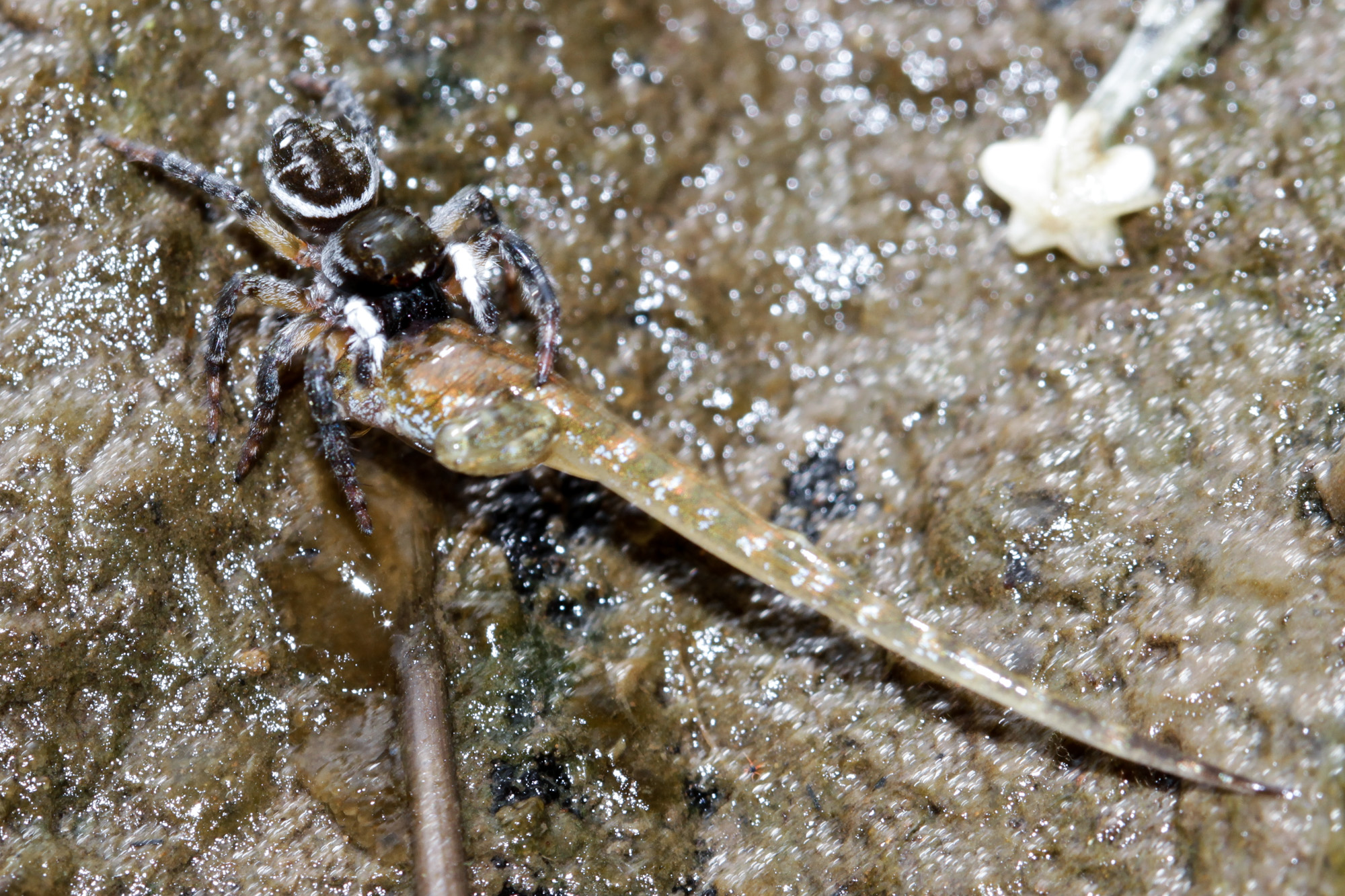
In a first-ever observation, scientists have documented a jumping spider catch and eat a tadpole. Though some large species of jumping spiders have been known to prey on frogs and lizards, this is the first time any jumping spider has been seen attacking a tadpole. Here, the spider struggles to pull its prey up a muddy cliff face.
Unusual hunt
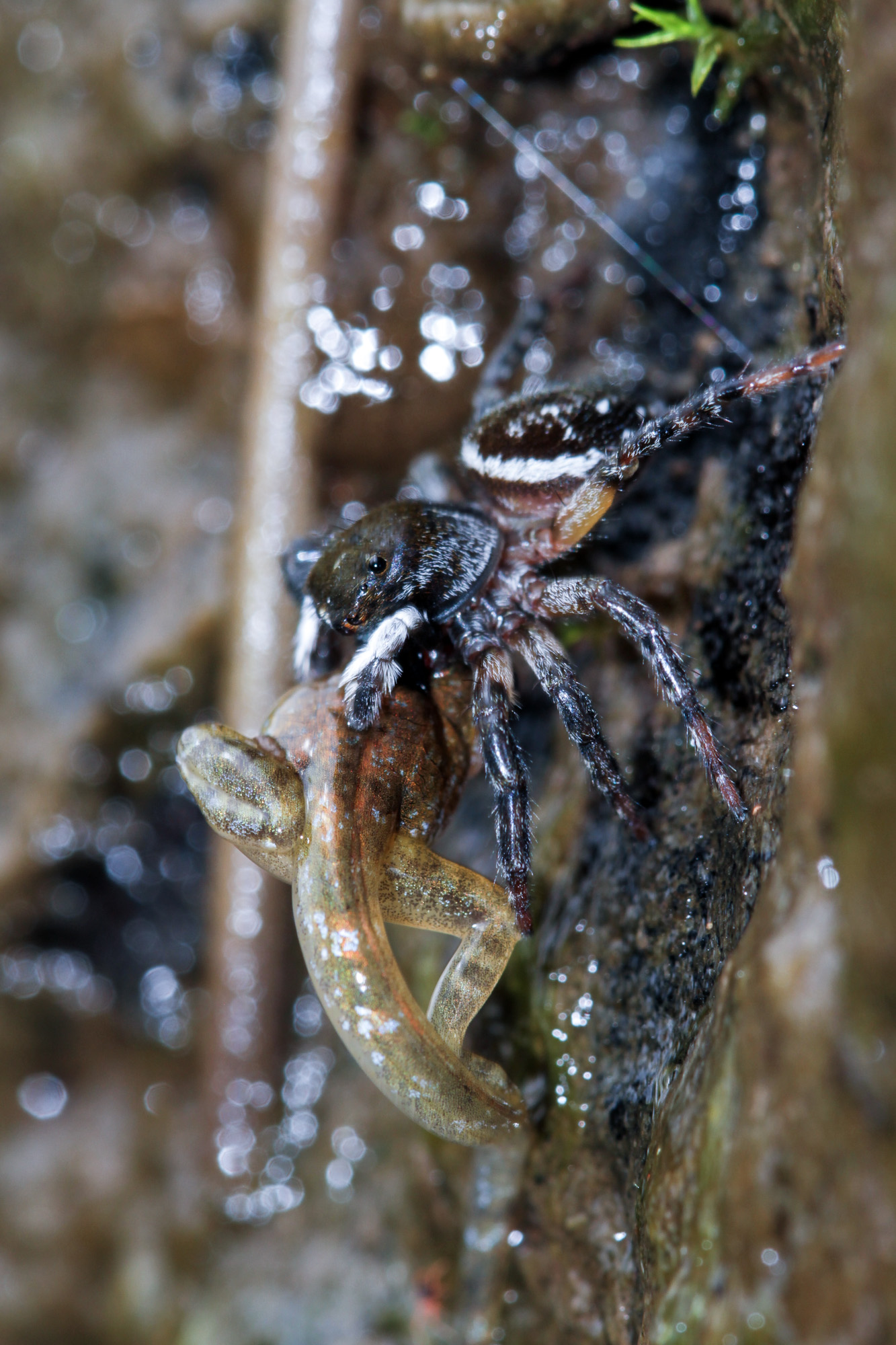
A doomed tadpole's developing legs are seen as a jumping spider drags it up a cliff face. Researchers doing a botany survey in India's Western Ghats came across this scene one afternoon during monsoon season. They could not identify the species of spider, but suspect it is a close relative of the common species Hasarius adansoni, which grows about 0.3 inches (8 millimeters) in length.
Hunting Grounds

A view of a 7-foot (2.1 meter) cliff face with small streams cascading down. Javed Ahmed, an arachnologist based in Mumbai, and other naturalists and scientists were surveying this area in India's Western Ghats when they noticed tadpoles clinging to the muddy rock within these small torrents. Then they saw something really strange: A jumping spider trying multiple times to capture one of the juvenile amphibians. Eventually, it succeeded and dragged its prey to a muddy spot to consume it.
Feast for a jumping spider
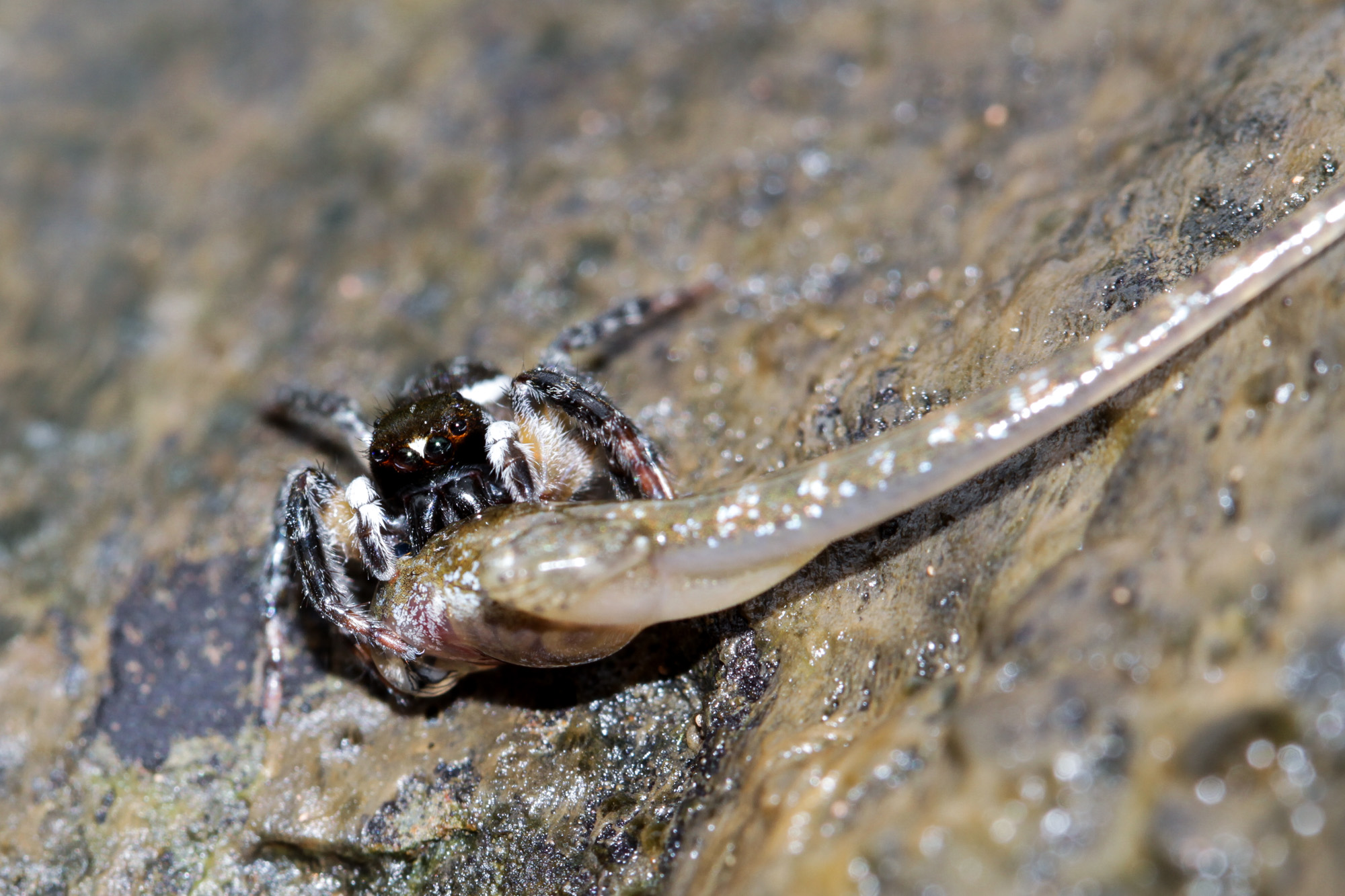
A jumping spider feasts on a captured tadpole in India's Western Ghats, a mountain range known for its unexplored biodiversity. Jumping spiders have never before been known to prey on tadpoles, but they are famous for their sharp vision and savvy hunting skills. Instead of weaving webs, these spiders pounce on prey.
Bringing home the bacon
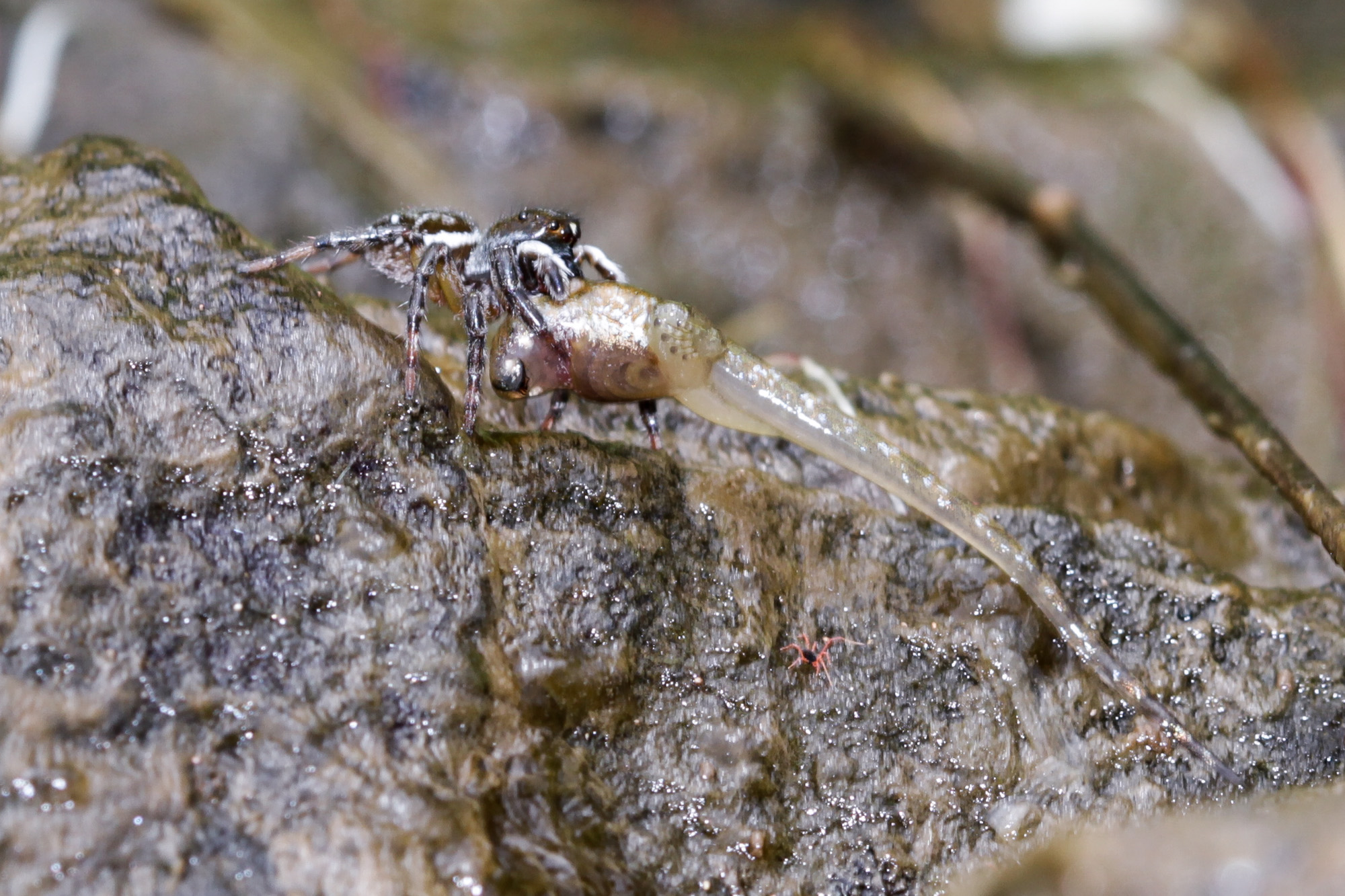
Researchers aren't sure the precise species of the jumping spider; it could be a new or undiscovered variety, said arachnologist Javed Ahmed, who reported the discovery of the tadpole-eating spider in the journal Peckhamia. The tadpole is likely part of the genus Indirana, a group found specifically in India's Western Ghats. These frogs are small and unassuming stream-dwellers.
Four-eyes
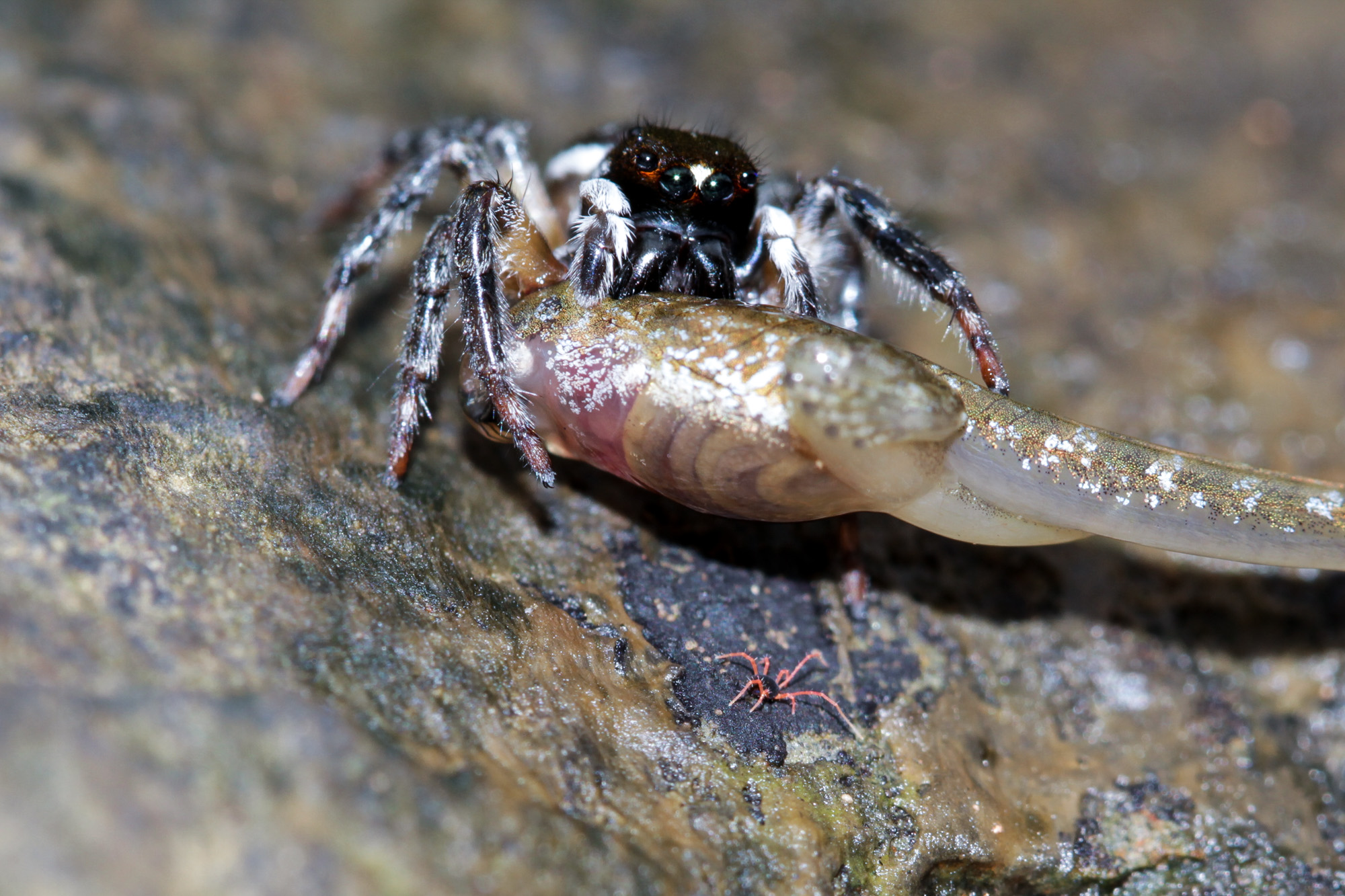
The typical eye arrangement of the jumping spider is clearly visible in this image of the arachnid enjoying its tadpole meal. Jumping spiders have four pairs of eyes, and the frontmost two are usually the largest. Their vision is very acute, said arachnologist Javed Ahmed, and they are known for complex behaviors and arm-waving courtship dances.
Plying the streams
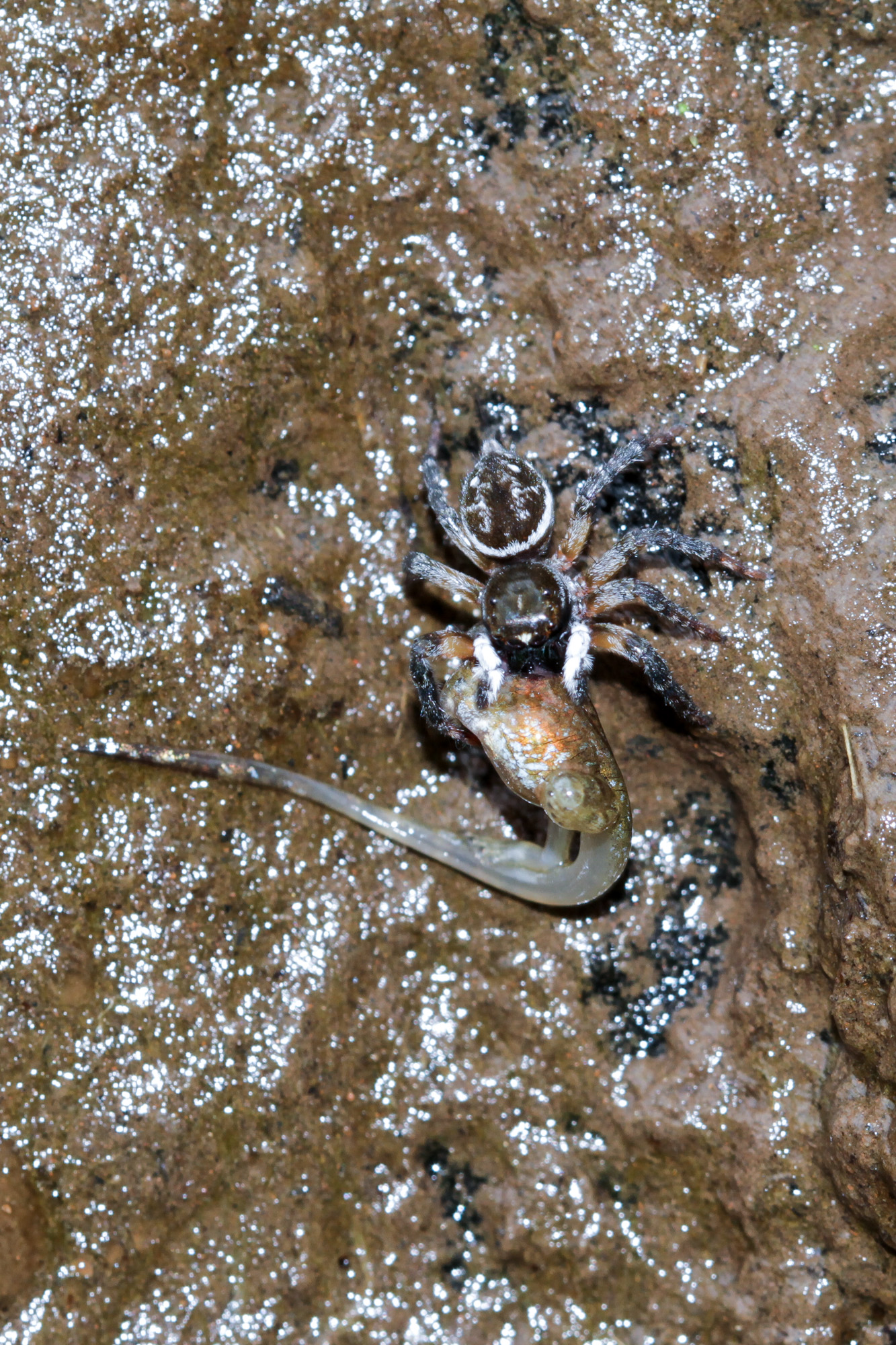
A jumping spider settles in with its tadpole meal. Arachnologist Javed Ahmed and his colleagues are attempting to document biodiversity in the spiders and invertebrates of the Western Ghats, which have not been fully explored, he said. There are more than 5,000 species of jumping spiders the world over, and few descriptions of how to identify Hasarius adansoni and its close relatives in the field from markings alone, he said.
Sign up for the Live Science daily newsletter now
Get the world’s most fascinating discoveries delivered straight to your inbox.
Unfortunate tadpole
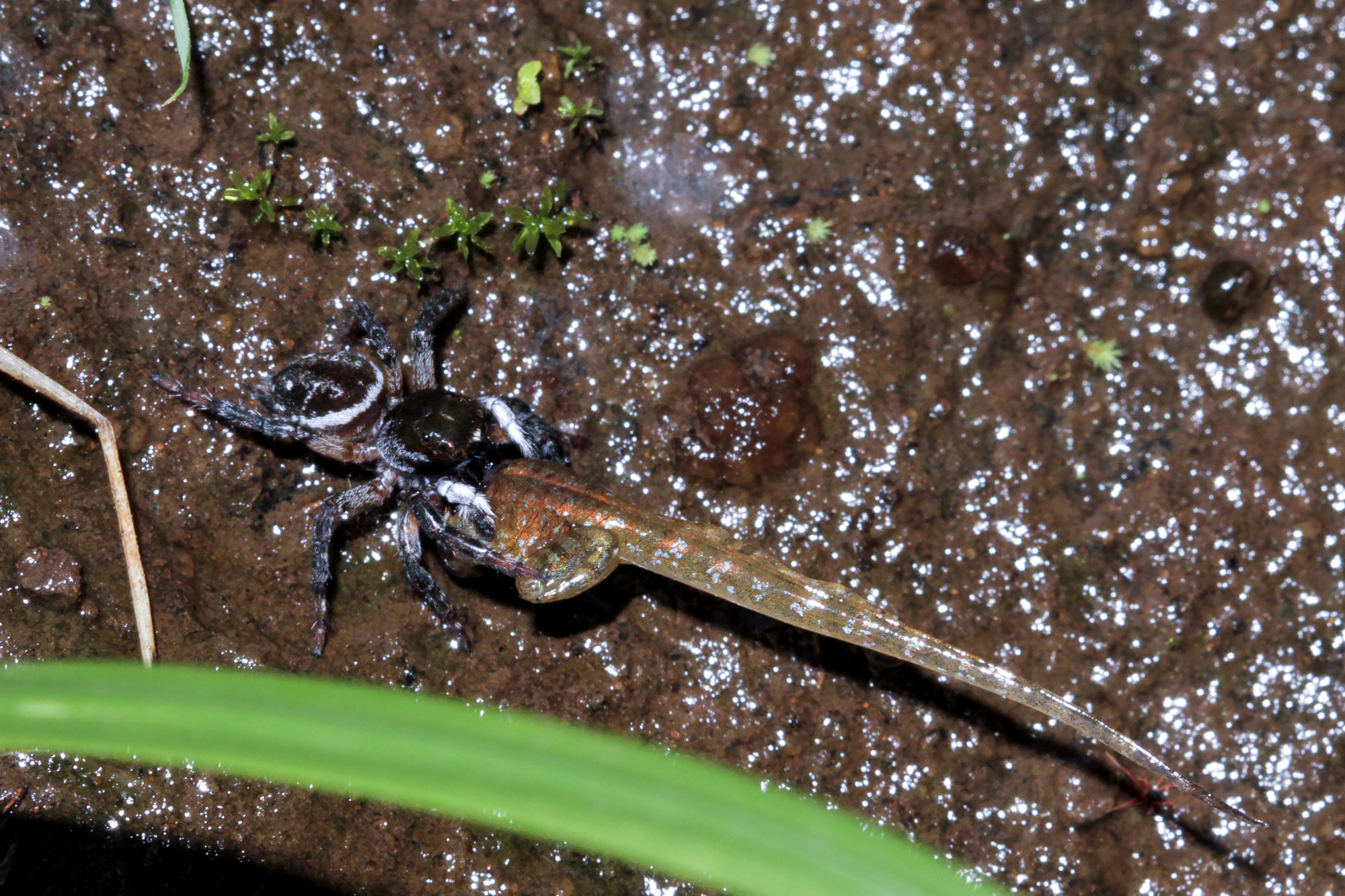
A tadpole is no match for a jumping spider at the Kumbharli Ghat mountain pass in India's Western Ghats. Jumping spiders are typically known to eat insects, though some species prey solely on spiders, Ahmed said. The inch-long (2.2 centimeter) species Phidippus regius, found in Florida, has been seen preying on adult frogs and lizards, but the Indian specimen was much smaller.
Drier Ground
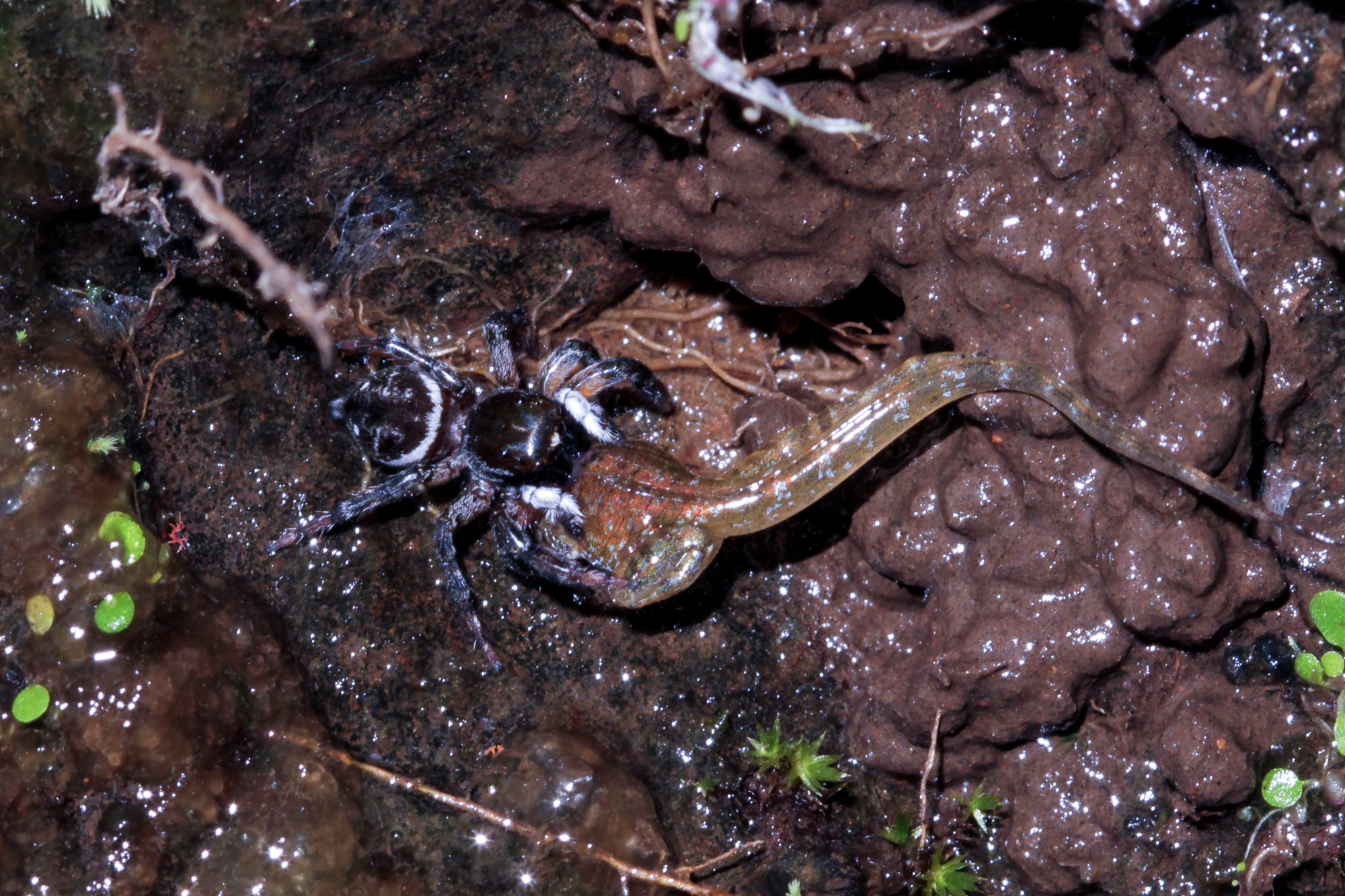
After braving rushing rivulets of current to catch the tadpole, the jumping spider dragged its prey to drier, if still muddy, ground. Little is known about how common this tadpole-eating behavior is.
"Of late, our team has specifically started focusing on jumping spiders, and published several important papers on the family, and the more we observe and study them, the more they surprise us!" arachnologist Javed Ahmed, who is based in Mumbai, wrote in an email to Live Science.
Strange sight
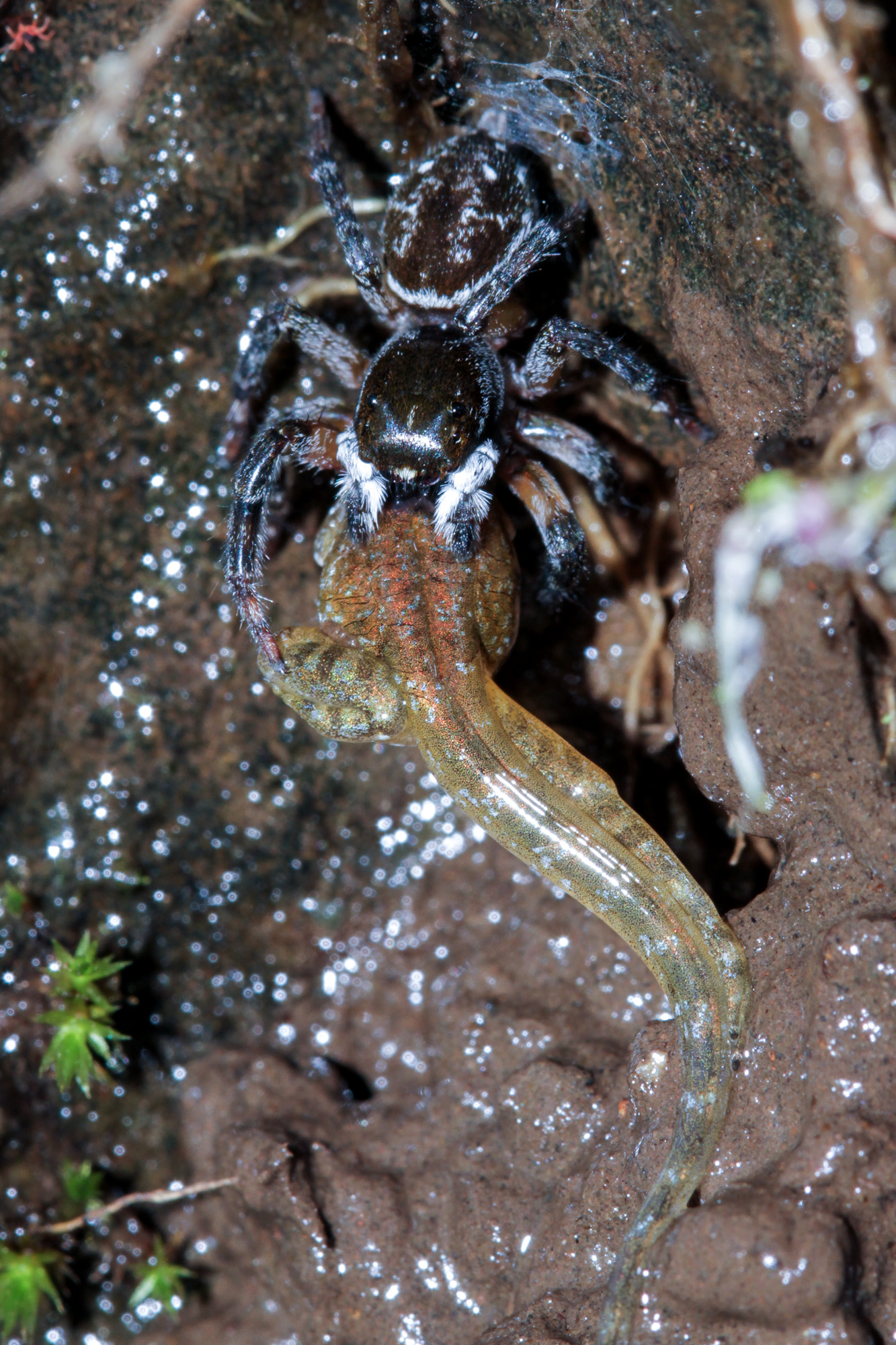
The researchers and naturalists conducting the survey realized immediately that the spider behavior they were seeing was strange and unusual. Ahmed emailed a U.S.-based jumping spider expert for confirmation, and the team reported their findings Nov. 29 in the journal Peckhamia.

Stephanie Pappas is a contributing writer for Live Science, covering topics ranging from geoscience to archaeology to the human brain and behavior. She was previously a senior writer for Live Science but is now a freelancer based in Denver, Colorado, and regularly contributes to Scientific American and The Monitor, the monthly magazine of the American Psychological Association. Stephanie received a bachelor's degree in psychology from the University of South Carolina and a graduate certificate in science communication from the University of California, Santa Cruz.










